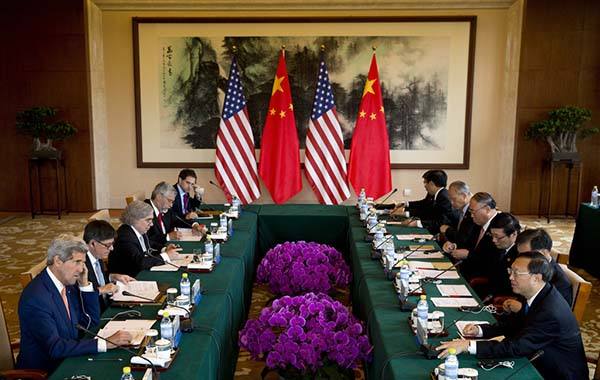Finance and Economics
財經
Trade Deals: Trying For Anything
貿易協議:嘗試一切可能
The biggest trade deal in decades shows why getting an agreement is so hard.
數十年來內最大貿易協定表明了為什么達成協議如此困難。
IN THE wee hours of December 7th 2013, after weeks of haggling, exhausted trade representatives stood to applaud.
2013年12月7日凌晨,在持續幾周的討價還價之后,筋疲力盡的貿易代表們全體起立,鼓掌慶祝。
Agreement had been reached on the first trade deal in the history of the World Trade Organisation (WTO).
在世界貿易組織(WTO)歷史上的第一項貿易協定已達成一致。

No longer could it be accused of being a talking shop, crimped by consensus.
這項協議再也不會受制于各執己見無法統一而被視為空談。
“For the first time in our history, the WTO has truly delivered,” said Roberto Azevedo, the body's chief.
機構主席羅伯特·阿澤維多說:“世貿組織真正誕生了,這是我們有史以來的第一次”。
The deal is tantalisingly close to coming into force, needing just two more national ratifications.
但是協議差一點點便可以生效,僅僅再需要兩個國家的批準。
Chad, Jordan, Kuwait and Rwanda are competing to take it over the line.
而乍得、約旦、科威特與盧旺達正在激烈爭奪。
In theory, the Trade Facilitation Agreement (TFA) is a beacon of hope on the trade landscape.
理論上說,貿易便利化協議就像貿易世界的燈塔。
It was unanimously agreed to by rich and poor countries.
這項協議得到了富裕國家和落后國家的一致同意。
If fully implemented, it could have an even bigger impact than slashing all tariffs.
如果協議得到完全實施,那么它帶來的影響甚至比大幅度削減所有關稅的影響還要大。
It is an example of a win-win deal, in which peer pressure pokes governments into making life easier and more prosperous.
這是雙贏協定的典型,在所有成員的壓力下,各國政府著手使生活更加便利、更加殷實。
The agreement shies away from slashing subsidies or toppling tariffs, and instead hacks at the thicket of regulatory trade barriers.
這項協定沒有去大幅削減補助,或者降低關稅,反而大肆修改監管貿易壁壘的尺度。
The red tape is stickiest in poorer countries; in sub-Saharan Africa exporters must endure nearly 200 hours of inspections, regulations and paperwork.
貧困國家的過關手續是最繁瑣的;在非洲撒哈拉沙漠以南地區,出口商需要忍受近乎200個小時的檢查、監管以及通關文書等手續。
Richer countries face only 15.
不過,發達國家只需要15個小時。
The TFA is supposed to surmount these hurdles by, for example, setting standards, streamlining processes and squeezing fees.
貿易便利化協定將克服這些阻礙,比如說,通過設定新的標準,流水線般的通關手續同時降低費用。
This would cut trade costs by as much as 15% in poorer countries.
該協議將幫助貧困國家削減多達15%的貿易花銷。
It also enforces greater transparency.
同時也會有助于提高透明度。
Export-led growth is tricky if people do not know how to export.
如果商人不知道如何進行出口,那么以出口導向為增長(的貿易)會很困難。
A study by Evdokia Mose and Silvia Sorescu of the OECD found that better information could cut trade costs by 1.7% in low-income countries.
來自經濟合作與發展組織(OECD)的Evdokia Mose和Silvia Sorescu發現,在低收入國家,更為有效的信息途經會減少1.7%的貿易花銷。
考研英語時事閱讀











